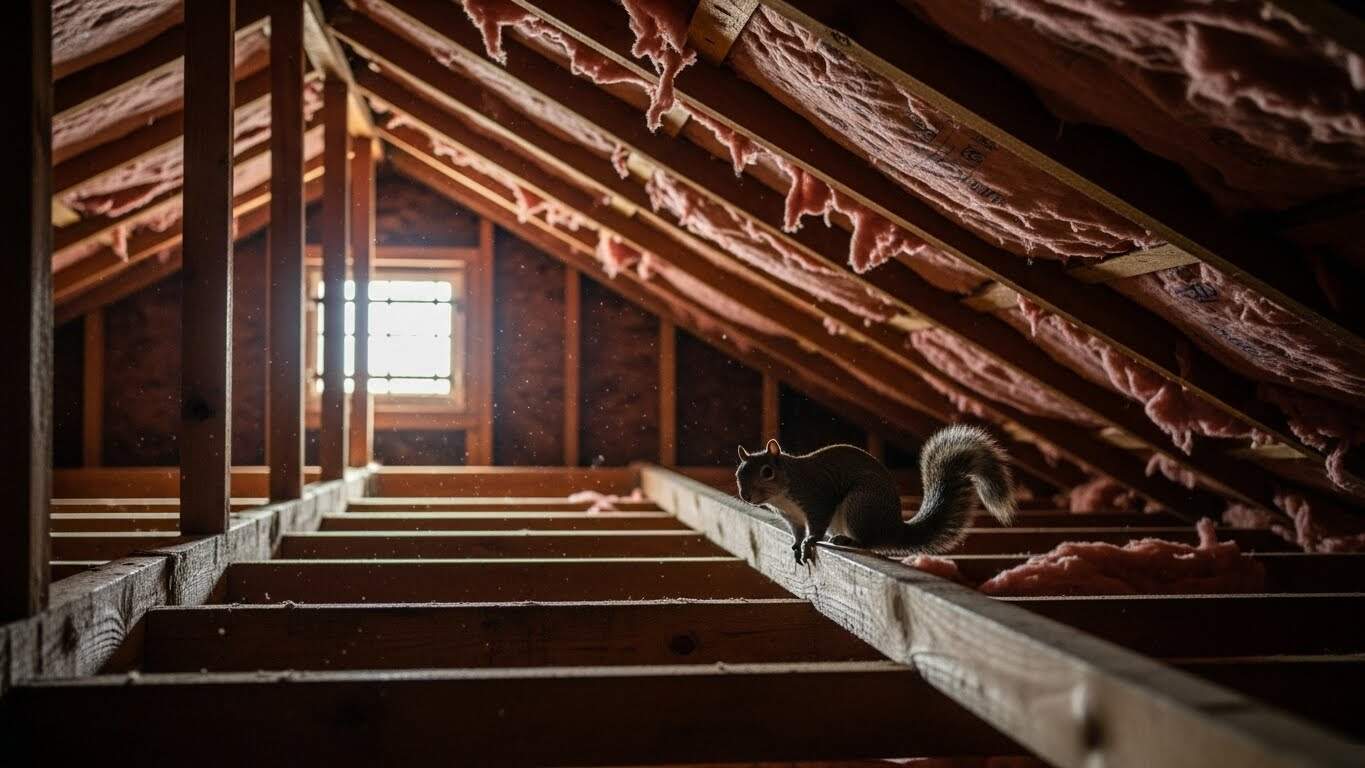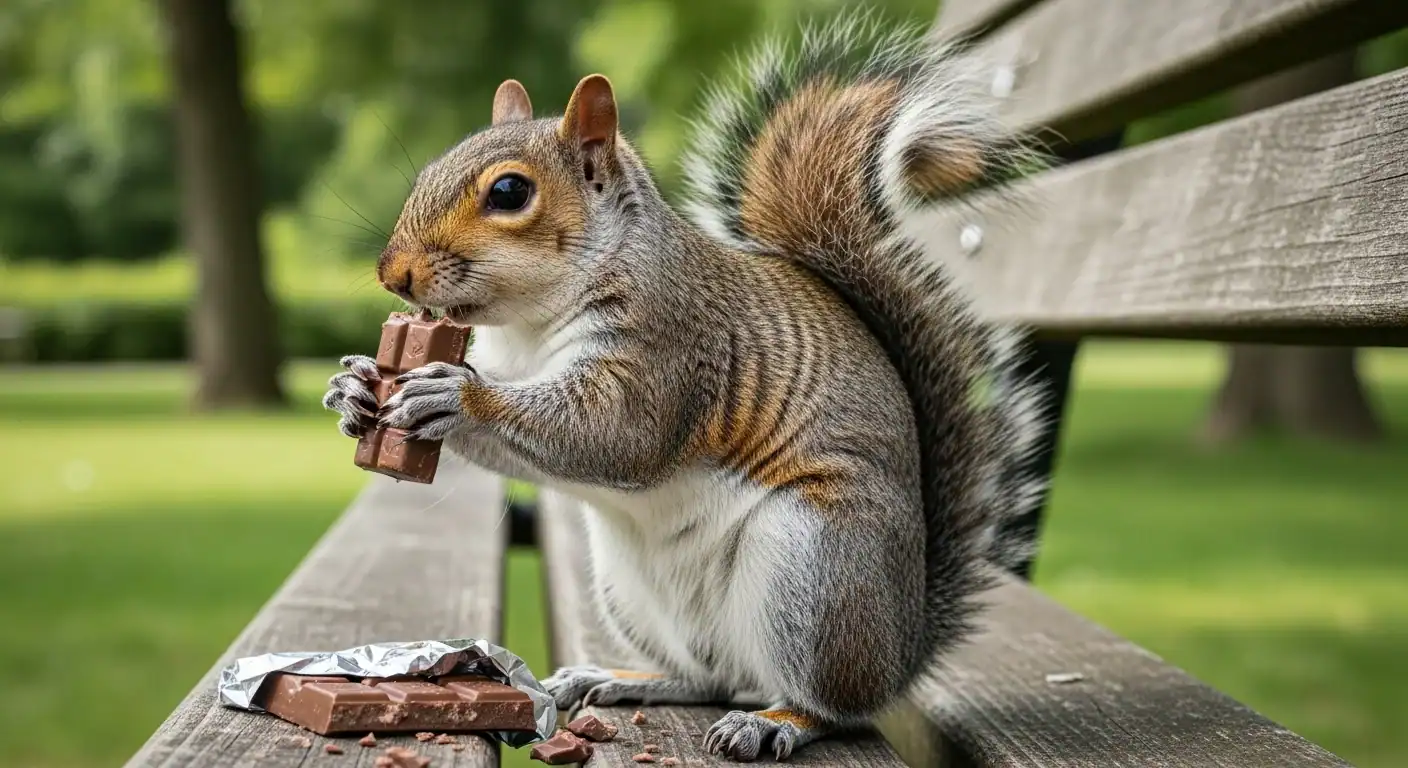Squirrels are fascinating creatures, known for their quick movements and bushy tails. But have you ever wondered how long squirrels live in the wild? The lifespan of a wild squirrel depends on many factors like species, predators, food availability, and environmental challenges. In this guide, we’ll explore how long squirrels live in the wild, what affects their lifespan, and the different factors that play a role in their survival.
The Average Lifespan of Wild Squirrels
How Long Do Squirrels Live in the Wild? Understanding the Average Lifespan
On average, squirrels in the wild live between 3 to 6 years. However, many squirrels don’t live to be that old. Most baby squirrels do not survive past their first year of life. This is mainly due to predators, accidents, and diseases that take a heavy toll on young squirrels.
Interestingly, under the right conditions, some squirrels can live up to 10 years. For example, gray squirrels have been known to live longer, especially in areas with fewer predators and ample food. Despite their agility and ability to adapt, the challenges of life in the wild shorten their lifespans.
What Affects a Squirrel’s Lifespan in the Wild? Key Survival Factors
Squirrels face many challenges that can affect how long they live in the wild. Let’s take a closer look at some of the major factors that influence their lifespan:
- Predators: One of the biggest dangers to squirrels is being hunted by predators.
- Food: Availability of food can greatly affect their survival.
- Shelter: A safe place to live, such as a nest in a tree, is crucial.
- Diseases and Parasites: Health risks like infections and parasites can shorten their lives.
Related article: How long do squirrels live
Factors That Impact Squirrel Lifespan in the Wild
The Role of Predators in Squirrel Mortality Rates
Squirrels are preyed upon by many animals, which affects how long they live. Some of the main predators that threaten squirrels include:
- Birds of Prey: Hawks and owls hunt squirrels, especially in open areas where squirrels are more exposed.
- Snakes: Certain types of snakes, like rattlesnakes, can easily catch squirrels.
- Foxes and Coyotes: These animals hunt squirrels, especially when they are out searching for food.
- Domestic Cats and Dogs: Many squirrels fall victim to household pets.
These predators make survival difficult for squirrels, especially in their first year when they are most vulnerable.
How Food Availability and Scarcity Influence Squirrel Lifespan
Squirrels depend on a diet of nuts, seeds, fruits, and fungi. If food is scarce, squirrels may struggle to survive. Droughts, deforestation, or changes in the environment can reduce the number of available food sources. When squirrels don’t get enough to eat, they become weaker and more vulnerable to predators, diseases, and other risks.
On the other hand, when food is abundant, squirrels tend to live longer. They can store food in the winter, which helps them survive when fresh food is hard to find.
Habitat and Shelter: How Dreys and Safe Nesting Impact Survival
A squirrel’s shelter plays a big role in its survival. Squirrels build nests called dreys high in trees. These nests provide a safe place for them to sleep, rest, and raise their babies. The safety of the nest is very important—if a squirrel’s nest is damaged or easily accessible to predators, it can significantly reduce its chances of survival.
Squirrels also need shelter to protect them from harsh weather. In cold climates, dreys help squirrels stay warm during winter. Without proper shelter, squirrels may not survive extreme conditions.
The Impact of Diseases and Parasites on Wild Squirrel Lifespan
Squirrels can also suffer from diseases and parasites that shorten their lives. Some common health threats to squirrels include:
- Squirrel Pox: This is a viral disease that can weaken a squirrel and make it easier for predators to catch them.
- Fleas and Ticks: These parasites can carry diseases and weaken squirrels, making it harder for them to survive in the wild.
When squirrels are sick or infested with parasites, they are more likely to die early, either from the disease itself or because they become more vulnerable to other dangers.
Wild Squirrel Lifespan by Species: A Breakdown
Different species of squirrels have different lifespans. Let’s look at the life expectancy for some of the most common types of squirrels in the wild.
How Long Do Gray Squirrels Live in the Wild? Lifespan and Survival Rates
Gray squirrels, one of the most common types of squirrels in North America, typically live 6 to 12 years in the wild. However, many gray squirrels do not survive their first year due to the dangers they face. In areas with fewer predators and plenty of food, gray squirrels can live much longer, sometimes reaching 10 years.
How Long Do Red Squirrels Live in the Wild? Life Expectancy and Environmental Factors
Red squirrels, which are smaller than gray squirrels, have an average lifespan of 3 to 7 years. These squirrels are more likely to survive in dense forests or areas with fewer predators. In contrast, in more urbanized environments, they may face more threats and have a shorter lifespan.
How Long Do Flying Squirrels Live in the Wild? Nocturnal Species and Lifespan Insights
Flying squirrels are nocturnal and tend to live 3 to 5 years in the wild. While they are good at gliding between trees to escape predators, they still face many threats. Their ability to avoid predators depends largely on having a safe habitat and plenty of food at night.
Comparison: Wild vs Captive Squirrel Lifespan
How Long Do Squirrels Live in Captivity?
In captivity, squirrels can live much longer than in the wild. While wild squirrels usually live around 3 to 6 years, captive squirrels can live up to 15–20 years. This is because they are protected from predators, given regular food, and provided with proper medical care. Zoos and wildlife sanctuaries can offer a safe environment that reduces the risks wild squirrels face.
The Geographic Influence on Squirrel Lifespan
Squirrels’ lifespans can vary depending on where they live. Some regions offer better conditions for squirrels to survive and thrive, while others present more challenges.
How Long Do Squirrels Live in Florida, Canada, and Texas? Geographic Variations in Lifespan
- Florida: Squirrels in Florida, where winters are mild, tend to live up to 10 years.
- Canada: In colder climates, like Canada, squirrels live shorter lives due to the harsh winter conditions, usually under 8 years.
- Texas: In Texas, squirrels live anywhere between 6 to 12 years, benefiting from diverse environments.
The climate and the availability of resources play a significant role in how long squirrels live in different geographic locations.
Fun Facts About Squirrel Mortality Rates and Lifespan
Why Do Baby Squirrels Have High Mortality Rates in Their First Year?
Did you know that up to 60–70% of baby squirrels die before they reach adulthood? The main reason is predation. Young squirrels are especially vulnerable to predators like hawks, owls, and even domestic cats. In addition, baby squirrels often fall from their nests, which can lead to injury or death.
FAQs About Squirrel Lifespan in the Wild
Squirrels in the wild typically live between 3 to 6 years. However, many squirrels don’t survive their first year due to threats from predators, disease, and other environmental challenges. In some cases, squirrels can live up to 10 years, especially if they have fewer predators and an abundant food supply.
Squirrels face many dangers in the wild that significantly shorten their lifespan. Predators like hawks, owls, and foxes pose a constant threat, particularly to young squirrels. Additionally, diseases, food scarcity, and harsh weather conditions can all contribute to their relatively short lives in the wild.
Gray squirrels typically live between 6 to 12 years in the wild. However, many gray squirrels do not survive past their first year. In areas with fewer predators and plenty of food, gray squirrels may live longer, reaching up to 10 years.
Red squirrels generally live between 3 to 7 years in the wild. Their lifespan largely depends on the environment they live in. In forested areas with fewer predators, they tend to live longer, while urban environments with more dangers may reduce their lifespan.
Flying squirrels live around 3 to 5 years in the wild. These nocturnal creatures are good at gliding between trees to avoid predators, but they still face many threats that affect their lifespan. A safe habitat and a stable food supply are essential for their survival.
Food availability plays a major role in a squirrel’s lifespan. Squirrels rely on nuts, seeds, fruits, and fungi for nutrition. When food is scarce, squirrels may become weak, making them more vulnerable to predators and diseases. On the other hand, an abundant food supply helps squirrels thrive and live longer.
Squirrels face many predators, including birds of prey like hawks and owls, snakes, foxes, coyotes, and even domestic cats and dogs. These predators can significantly reduce a squirrel’s chance of surviving past its first year of life.
Yes, squirrels live much longer in captivity. While wild squirrels typically live between 3 to 6 years, squirrels in captivity can live up to 15–20 years. This is because they are protected from predators, given regular food, and provided with medical care.
Up to 60–70% of baby squirrels do not survive their first year. The primary reasons for this high mortality rate include predation, falls from their nests, and harsh weather conditions. Baby squirrels are particularly vulnerable to these dangers.
A squirrel’s environment plays a significant role in its lifespan. Squirrels in regions with mild winters and fewer predators, like Florida, can live up to 10 years. In colder regions like Canada, squirrels tend to live shorter lives, usually less than 8 years, due to the harsh weather conditions.
Final Thoughts on Squirrel Lifespan in the Wild
In conclusion, the lifespan of a wild squirrel can vary based on species, environment, and survival factors like predators, food, and shelter. While squirrels can live up to 10 years in the wild, many do not survive their first year due to the many dangers they face. Understanding the challenges squirrels face helps us appreciate these small creatures and their role in the ecosystem.














